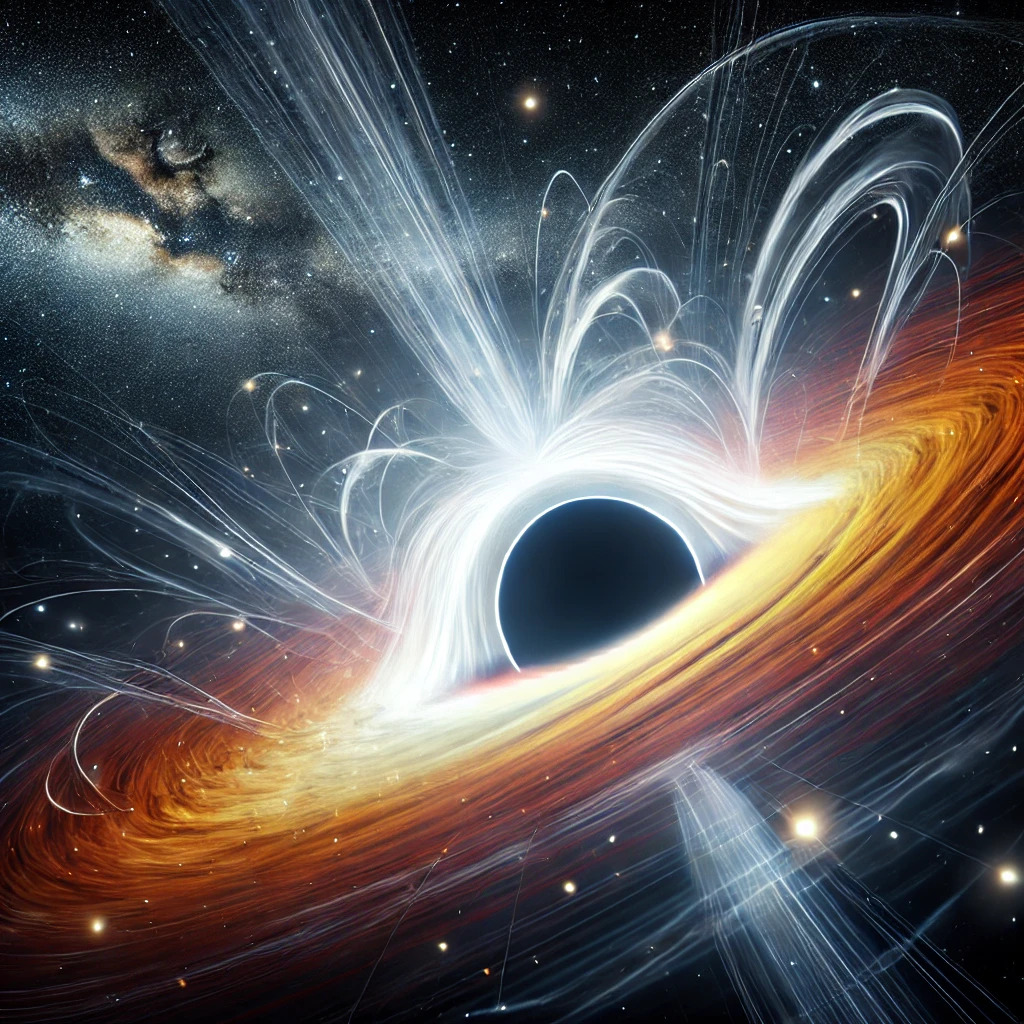Introduction
White holes are among the most intriguing and least understood concepts in modern theoretical physics. They are often described as the time-reversed counterparts of black holes, regions of spacetime from which nothing can enter, but matter and energy can escape. While black holes pull everything into their gravitational abyss, white holes hypothetically expel matter, seemingly defying the fundamental laws of physics as we understand them. But do they really exist? And if so, what implications would their existence have for our understanding of the universe?
Theoretical Foundations of White Holes
The concept of white holes originates from Einstein’s field equations in general relativity. The Schwarzschild solution, which describes a non-rotating black hole, can be mathematically extended to include a second region that acts as a white hole. In this framework, white holes would appear as a necessary counterpart to black holes in a maximally extended spacetime geometry. However, this theoretical extension does not imply that white holes must exist in the physical universe.
In the Schwarzschild metric, the white hole region is a hypothetical area from which particles and radiation can escape but into which nothing can enter. If such objects were to exist, they would be visible because they would constantly emit radiation and matter. However, unlike black holes, which have been indirectly observed through their gravitational effects and the emission of X-rays from their accretion disks, no empirical evidence of white holes has been found.
A fundamental issue with white holes is their apparent violation of the second law of thermodynamics. In classical thermodynamics, entropy always increases in a closed system. A white hole, which would expel matter in an ordered state, seems to contradict this principle. This leads many physicists to regard them as mathematical artifacts rather than real physical objects.
(Source: JILA, University of Colorado)
Are White Holes Observable? The Challenges of Detection
Unlike black holes, which can be inferred through their gravitational influence on surrounding matter, white holes have no known signatures in astronomical observations. If white holes existed, they would need to emit enormous amounts of energy, making them potentially detectable. However, no such emissions have been conclusively identified.
One possible candidate for white holes in observational astrophysics is the phenomenon of fast radio bursts (FRBs). Some researchers have speculated that FRBs—mysterious, extremely brief flashes of radio waves originating from deep space—might be linked to white hole activity. The idea is that if a white hole were to suddenly form and release energy, it could produce an intense burst of radiation. While this is an exciting hypothesis, there is currently no direct evidence to support it.
Another speculative idea is that white holes could be connected to gamma-ray bursts (GRBs), the most energetic explosions in the universe. GRBs are typically thought to be caused by supernovae or the mergers of neutron stars, but some theories suggest that they could be linked to the sudden emergence of matter from white holes. Again, without observational confirmation, this remains a theoretical possibility rather than a proven fact.
White Holes and the Fate of Black Holes
A particularly interesting development in the study of white holes concerns their possible relationship with black hole evaporation. According to Stephen Hawking’s theory, black holes slowly lose mass over time due to Hawking radiation. As a black hole shrinks, what happens to the information it contained? This question, known as the black hole information paradox, remains one of the greatest mysteries in theoretical physics.
One proposed resolution to this paradox suggests that a black hole, after fully evaporating, could transition into a white hole. In this scenario, the information swallowed by the black hole might be released when it turns into a white hole, thus preserving the principle of information conservation. This idea is supported by some quantum gravity models, which propose that quantum tunneling effects could allow for such a transformation.
A study titled "White Holes as Remnants: A Surprising Scenario for the End of a Black Hole" explores this idea in depth, arguing that a white hole remnant could form as a result of the final stages of black hole evaporation. If correct, this theory would provide a revolutionary insight into the lifecycle of black holes and their potential connection to white holes.
Could the Big Bang Have Been a White Hole?
Another fascinating hypothesis is the possibility that the Big Bang itself was a white hole. Some researchers have speculated that our universe could have emerged from a white hole in a higher-dimensional space. In this scenario, what we perceive as the expansion of the universe could be interpreted as the outflow of matter and energy from a massive white hole.
This idea is tied to theories about the multiverse and cyclic cosmology. If white holes exist as the opposites of black holes, they could provide a mechanism for the creation of new universes. Some speculative models even suggest that every black hole could give birth to a new universe on the "other side," effectively making white holes the entry points into parallel realities.
Do White Holes Really Exist?
As of now, white holes remain a theoretical construct without any empirical evidence to support their existence. While they emerge naturally from the equations of general relativity, their physical reality is questionable. However, ongoing research in quantum gravity, black hole thermodynamics, and cosmology continues to explore the possibility that white holes may play a role in our universe.
If white holes do exist, they could provide answers to some of the most profound questions in physics, from the fate of black holes to the origins of the universe itself. Until observational evidence is found, they remain one of the most enigmatic and fascinating mysteries in modern science.
The study of white holes continues to challenge our understanding of space, time, and the fundamental laws of nature. Whether they remain a mathematical curiosity or become an integral part of future physics remains to be seen.








Leave a Comment